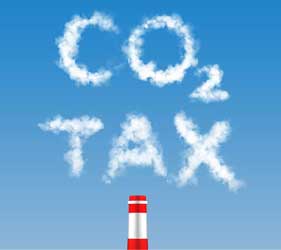The “social cost of carbon” — a calculation of how much fiscal harm is currently foisted on society by emitting a ton of dreaded carbon dioxide — has just plummeted due to a recalculation by the Government Accountability Office.
It dropped a whopping 86 percent, from the Obama administration’s $50 per ton to the Trump administration’s $7. The much lower estimate destroys any rationale for a carbon tax.
How could such a disparity in cost estimates exist? For one thing, the Trump administration followed Office of Management and Budget rules while the previous administration did not.
OMB specifically says that calculations of the effects of regulations should “focus on benefits and costs that would accrue to citizens and residents of the United States.”
Trump’s GAO did exactly that, while the earlier calculations were based on global costs. That makes a big difference, because poorer nations are hit harder by the vagaries of climate and weather than are rich ones.
OMB also advised that the base case for regulation should use “a real discount rate of 7 percent” along with 3 percent. The first figure is very close to the average stock market annual growth for the past 120 years. The highest rate the Obama administration used was only 5 percent, which effectively magnifies the future cost of present-day emissions.
New research shows that the competing (cooling) effects of particulate emissions have been vastly overestimated. So my colleagues Ross McKitrick, Kevin Dayaratna, and I crunched the numbers, based on projections of less future warming, and found the “social cost of carbon” (SCC) may be even lower.
Also, there’s more plant matter in the world nowadays. The enhancement of global vegetation caused by carbon dioxide itself turns out to be much larger than in the previous SCC estimates. Both natural and agricultural vegetation is growing like topsy.
For example, the standing crop of the world’s grasslands — the largest agrosystem on earth — is shown in satellite data to be growing at a phenomenal 5 percent per year. That doubles its mass in 20 years.
Our research therefore modified the agricultural enhancement term in Richard Tol’s Framework for Uncertainty, Negotiation and Distribution (FUND) model, as it was based upon findings from a quarter-century ago, before multiple satellite studies revealed such profound planetary greening and before laboratory-like studies of agricultural growth stimulated by increasing carbon dioxide.
We were able to exactly reproduce the new GAO cost of $7 per ton with the basic FUND model and a 7 percent discount rate. But when we factored in the lower sensitivity of temperature and the larger agricultural enhancement, the current SCC turns out to be a negative $3.71 per ton. And we found that the negative costs persist well into the second half of this century.
No, that doesn’t mean taxpayers should subsidize the combustion of fossil fuels. But it also means that the many calls for taxation of carbon don’t match the reality of what’s happening in the United States.
It means that carbon taxes will end up increasing costs to society, because carbon-dioxide emissions will confer net benefits to society for the foreseeable future.
Policymakers should be free to talk about the social benefit of carbon, not just the costs.

